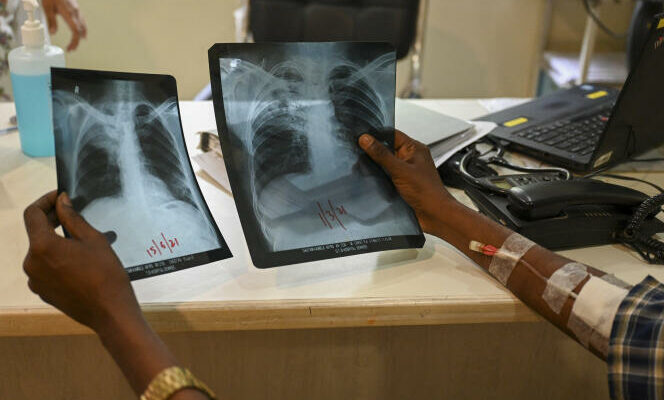In the often hushed world of international health authorities, the words of Guy Marks, president of the International Union Against Tuberculosis and Lung Diseases, stand out. On the occasion of World Tuberculosis Day, Sunday March 24, the professor alerts in a press release: the incidence of the bacterial infectious disease in the most affected countries (Bangladesh, China, India, Nigeria, Pakistan, Democratic Republic from Congo…) decreases at a rate “horribly slow”. “We must have the courage to admit that the current strategy to end TB in [ces] country does not provide the results we hope for,” he says.
Main source of his disappointment: the shortcomings of screening. Koch’s bacillus, which causes the disease, has killed 1.3 million people in 2022, according to the World Health Organization (WHO), while of an estimated 10.6 million new cases, 3.1 million are remained unknown to health services. Experts have dubbed them the “missing millions.” Difficulties in accessing care partly explain this gap.
But, according to Mr. Marks, patients often go undetected. “because they do not experience or recognize the symptoms.” Consequently, the Union judges ” vital “ to make a “comprehensive screening” of the population in high incidence contexts, beyond symptomatic people and groups at risk.
“Screening standards to be reviewed”
Several studies have sought to evaluate the proportion of subclinical tuberculosis, that is to say little or no symptomatic; a meta-analysis is published in the magazine The Lancet Infectious Diseases on March 12. Researchers led by Frank Cobelens, professor at the Amsterdam Institute for Global Health and Development, reviewed twelve studies in Africa and Asia including 600,000 people, including 1,900 patients. They tested three definitions of subclinical tuberculosis: “no persistent cough beyond two weeks,” “no cough at all,” and “no symptoms” among cough, fever, chest pain, night sweats, and weight loss. .
The analysis estimates that the proportion of subclinical tuberculosis reaches 59% according to the first definition, 40% according to the second and 20% according to the third. But these are only crude results: according to the researchers, the studies considered may have missed patients due to errors in the radio diagnosis of the lungs or because of missing or unusable confirmatory biological cultures. Once these biases have been corrected, 83% of patients do not have a cough for more than two weeks and 62% do not have a cough at all.
You have 62.99% of this article left to read. The rest is reserved for subscribers.
